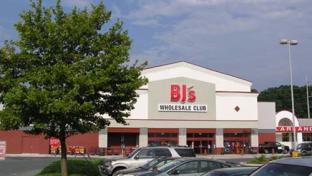16 Ways Food Retailers Can Reduce Expenses Now
COVID-19 has upended food retailers’ lives in dramatic ways. New social-distancing and sanitation requirements, along with supply-chain shortages, have counterbalanced some sales increases — putting pressures on grocers’ already narrow margins.
Against this backdrop, are there ways for food retailers to save money? The answer is a definite yes.
There are many hidden savings opportunities with providers of essential services, such as payment processing, waste disposal, telecommunications/networking, and electronic logging. Combined, expenses like these can make up 15% to 20% of stores’ costs, and they may be negotiable even when retailers think they have secured the lowest possible rates.
Following are some ways to uncover this money:
Credit Card Processing
- Think your rates are non-negotiable? Think again: Often, grocers are locked into particular payment-processing systems that integrate with their e-commerce software, but that doesn’t give the payment vendors the upper hand. Even when retailers think they’ve gotten the very best possible rates, they should ask about further discounts.
- Money chipped away: Grocers should ensure that their chip readers are working consistently, and replace/repair those that aren’t. Otherwise, they’ll be subject to costly fines.
- Be vigilant about security. The PCI Security Standards Council and its member companies are advancing standards that every grocer should incorporate to avoid data breaches. Worldwide, these breaches cost organizations a little less than $4 million on average, according to IBM Security.
- Remember the little details: For local grocers taking more phone orders during COVID-19, remembering to request and input the right ZIP code may seem unnecessary — but adding these details consistently will be a money saver.
- Seek volume discounts: Stores often prefer to have separate merchant accounts for every location, but this can leave them blind to the cost reduction possibilities. Individual locations should compare notes for two reasons: 1) to ensure that each one is being charged the same (optimal) rate, and 2) to collectively request better pricing based on volume.
Waste Disposal
- Adapt to a new market: Because countries that used to buy U.S. recyclables are no longer major customers, waste disposal has become more expensive. That makes it important to keep costs in check.
- Keep up with state requirements: State by state, recycling regulations change frequently. Moreover, these regulations will vary depending on the type of waste. Stay alert to the latest laws, and adapt quickly to avoid financial penalties.
- Sell fast food? Stores that provide fast food and dispose of grease should investigate sharing disposal services with buying groups, or with nearby restaurants that aren’t competitors.
- Compare and contrast. For general waste, it’s important to compare national, regional and local providers, all of which offer particular benefits.
- Rent or own? Stores that purchase their own incinerators, compactors or dumpsters, versus renting them from their service providers, will likely realize savings in the long run (the next two to three years).
- Handle the work independently: Grocers that are paying for companies to retrieve waste from their warehouses should also consider handling this disposal themselves.
- Adjust pickup frequency: It’s easy for waste-disposal schedules to go on autopilot. Retailers should re-evaluate them regularly to see whether the frequency could be reduced.
Telecommunications/Networking
- The VoIP advantage: Many retailers have already migrated their phones from copper lines to wireless VoIP (voice over internet protocol) systems. Particularly for retailers with multiple locations, the savings from this switchover will be significant if they’ve had individual copper-line accounts at each store.
- Move to the cloud: Grocers hosting their wireless systems on premise should consider cloud-based systems instead. By transferring hardware ownership to a third-party service provider, they’ll automatically reduce maintenance/repair costs.
- Separate connections: Consider separate Wi-Fi systems for customers versus staff for security purposes.
Electronic Logging Devices
- Be fleet of foot: Grocers with their own fleets should take a second look at the many vendor choices that now exist, including smaller, specialized companies that compete with the major brands. Many of these smaller companies have a more dedicated focus on electronic logging technology and are extremely competitive with their larger counterparts.
In short, it’s time for grocers to ring up every possible savings opportunity. By trying just a few of these tips, they stand to register a large improvement.







